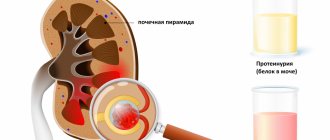If you handle electrical equipment carelessly or incorrectly, you may receive an electric shock. Perhaps this is one of the most insidious injuries. Consequences after an impact can be either visible (burns, pain, disturbances in cardiac and respiratory rhythms) or invisible. But even in the absence of external factors, the threat does not become less. And we need to act quickly. The strength of the current shock depends on the number of ions and electrons moving in the conductor. Let's figure out what to do if a person is electrocuted?
Of course, in the event of an electrical injury, it is necessary to provide first aid to the victim. The main indicators of such an injury: damage to organs and systems due to electric shock. In case of death - respiratory arrest and cardiac arrest. The consequences of a severe electric shock are difficult to predict. Various disorders may occur: in the field of the cardiovascular system, central nervous system, and hearing, vision, etc. are also possible. Therefore, it is very important to know and be able to independently provide first aid to the victim.
Electric shock - degree of damage
According to Frenkel:
- Frequent local convulsions
- General convulsion without the formation of prostration after interruption of contact with the conductor
- Severe prostration with inability to move, with or without loss of consciousness
- Instant death or death after previous prostration
By Polishchuk and Fistal:
- Partial convulsions with preserved consciousness
- Loss of consciousness and convulsions without ECG abnormalities
- Loss of consciousness accompanied by impaired cardiac and respiratory activity
- Clinical death
In this case, point 1—indicates a mild degree of damage, point 2—moderate degree, point 3—severe, and point 4—extremely severe.
In addition, the following factors are important in case of electric shock:
- Type of current: direct or alternating.
- Current exposure time.
- Current frequency and voltage in the network.
- Indicators of the general health of the human body (chronic and other diseases, alcohol consumption, body weight, age)
- Locations of discharge entry and exit points.
- The presence of foreign bodies and medical implants in the body.
- External factors (temperature, environment, room humidity, etc.).
How to provide first aid when receiving an electric shock, algorithm of actions
The main danger of electricity is that it has neither sight nor smell; it is impossible to prepare for an electric shock and jump to the side. If you suddenly receive an electric shock, it is best, of course, that there is someone else at home besides you who can provide first aid. Because, of course, the first question that arises when a person is struck by an electric shock is: what to do?
Unfortunately, if you are electrocuted, there is little you can do without outside help. It's good if you get thrown to the side or the blow is short. If this misfortune befalls your neighbor, you can save his life. You need to act immediately, put aside all talk. The sooner you begin to provide help, the greater the likelihood of a successful outcome, which will help reduce post-traumatic consequences.
So, in order to help a person who has been electrocuted, the following rules must be followed:
When receiving an electric shock, separate the victim from the source of electricity as quickly as possible.
Unplug the electrical appliance from the socket. If it is damaged, it is better not to touch it, so as not to become a victim yourself. It is better to use a wooden stick to pull the appliance plug out of the spatula. Try turning off the current at an external switch or fuse box.
If it is impossible to turn off the electricity, then you need to stand on a wooden chair or other wooden object, and you can also place a stack of newspapers, a book, a rubber mat, glass - something that does not conduct current - under your feet. Or in rubber shoes. Take another dielectric in your hands - a wooden or plastic mop handle, a rubber mat rolled into a tube - and try to move the victim away from the voltage source. Be careful - do not touch the victim’s body with your bare hands. These measures are more justified when the current voltage is more than 1000 Volts, but it is impossible to estimate the voltage in the electrical circuit offhand; it is better to play it safe so as not to get hurt yourself.
Electric shock - call an ambulance if necessary
Ambulance
Call an ambulance or local emergency number if the victim experiences:
- visible burns;
- difficulty breathing;
- muscle cramps or pain;
- confusion or loss of consciousness;
- problems with the heart rhythm (arrhythmia) or the heart does not beat at all.
Assess the respiratory and cardiovascular systems. Is the person conscious?
If the victim who has received an electric shock is unconscious, make him or her more comfortable - preferably on his back on a hard surface. So he should remain at rest either until the ambulance arrives, or (if the electric shock turned out to be insignificant) until the victim feels better, after providing him with first aid.
If the victim is conscious, lightly pat him on the cheek and ask basic questions. If the victim of an electric shock is unconscious, it is better not to move him, because you cannot know how serious the damage is.
Electric current when struck can cause circulatory problems. Therefore, in order not to cause hypothermia, the victim should be covered with a blanket or blanket. You can throw warm clothes on top of it.
Continuing to provide first aid to a victim of an electric shock, carry out a set of necessary actions:
- check the presence of breathing: is there breathing movement of the chest, or the well-known method is to bring a mirror/glass to your mouth and nose, which will fog up when there is breathing, you can take a thin thread that should deviate when breathing;
- determine the pulse on the carotid artery by pressing your fingers to its location;
- clear the airway for further rescue: place one hand, palm down, on the victim’s forehead, with the other hand you need to lift his chin with two fingers, push the lower jaw forward and tilt his head back. Attention! If there is a suspicion of a spinal fracture, these actions are prohibited. If the tongue sinks, it must be secured to the cheek with a pin.
Primary resuscitation of the victim (in the absence of pulse and breathing)
Indirect cardiac massage
- Indirect cardiac massage is most effective within the first 3 minutes after cardiac arrest. The patient should lie on his back on a flat surface (as a person who has been electrocuted should lie). The person providing assistance, with his elbows straight, places them in the middle of the chest between the nipples. It is necessary to make 100 rhythmic compressions for 1 minute on the chest with a compression amplitude of 5-6 cm and until the chest is completely straightened after pressing.
- Mouth-to-mouth breathing - two full exhalations every 30 presses on the projection of the heart. For this method of providing assistance, it is permissible to use only indirect cardiac massage.
- Duration of resuscitation measures. Effective until signs of life appear or an ambulance arrives. In this case, the victim is turned on his side and an ambulance is awaited. The maximum duration of action is 30 minutes, after which action is inappropriate except for those patients who are in cold temperatures.
- Drug treatment. It is already being carried out directly by emergency doctors. In a situation where the body’s reaction did not follow the rescue actions taken, 1 ml of adrenaline 0.1% is administered within 2-3 minutes (intramuscular, intravenous or intracardiac); as well as calcium chloride 10% - 10 ml, strophanthin 0.05% - 1 ml, diluted in 20 ml of 40% glucose solution.
- Painkillers. It is given to a person while maintaining consciousness, in case of a high pain threshold, until the ambulance arrives. You can also give a sedative.
- The victim is transported to the hospital in a supine position and covered with a warm blanket.
Close up burns
If the victim has burns, the first thing to do is cover them (lightly, not tightly) with a dry gauze bandage. Or a clean, smooth cloth. At home, this procedure can be done provided that the state of the person affected by the current allows him to remove clothes or cut them at the burn sites.
Bandage
Under no circumstances should you use fibrous cloth to bandage burns, as it can stick to the burned area and further damage the skin.
Help cope with shock
A person who has suffered an electric shock has experienced stress and may be in a state of shock. Signs of such shock may be: vomiting, weakness, severe pallor. What should you do to help? It's simple. Raise your legs slightly, placing a cushion of things under your feet.
Help cope with shock, lay the victim down
Why is fast response so important?
First aid in case of electric shock should be provided instantly, and each of you needs to know how it is done. This was taught in life safety lessons at school, but many of us hardly remember all the regulations for actions in such cases. Nevertheless, it is extremely important and useful to know about this, since none of us is immune from such influences.
The consequences of an electric shock are not always fatal, but they, one way or another, leave a serious imprint on the health of the human body.
Electrical injuries usually occur due to carelessness or curiosity.
- For example, teenagers can climb into a transformer booth without really thinking about the consequences.
- Very often, small children become victims of electricity; while exploring the world around them, they can simply touch a regular household outlet, grab a plug, or, worse, stick their fingers into its connectors.
Therefore, young parents should closely monitor the actions of their baby and, if possible, protect him from such consequences. What to do in case of a short-term electric shock and after it?
Electric shock - symptoms of damage
- A sudden fall of a person or him, like a doll, is thrown away from the current source by an invisible force.
- Loss of consciousness, convulsions.
- Pronounced involuntary muscle contractions.
- Violation of neurological functions - memory loss, misunderstanding of speech, disturbance of orientation in space, vision, pupillary reaction to light. Damage to tactile sensations.
- Ventricular fibrillation, respiratory arrest - uneven pulse and uneven breathing.
- Burns on the body with sharply defined boundaries.
Signs of current on the skin
They differ in characteristics, shape, color, sensitivity. They are easy to identify by visual observation.
Traces of electric shock on the palm
The shape can be oval, round, linear... Where the middle of the burn sinks slightly inward, which indicates detachment of the top layer of skin. Blisters may also appear at the burn site.
The color is often pale, a pale gray lighter than the surrounding skin.
Sensitivity is characterized by pain at the sites of electric shock.
Also, one of the signs is the deposition of metal particles on the skin: The higher the voltage that strikes a person, the deeper these particles are. And vice versa, if the current voltage is small, metal particles will be on the surface of the skin. The color depends on the metal in the conductor: copper - blue-yellow particles, iron - brown.
Treatment of affected skin areas
After the basic measures have been carried out, the burn areas should be treated. Electric shock always leaves 2 marks on the body. They need to be found and washed with running water for several minutes. “Current marks” should not be treated with an antiseptic solution, as this may increase the depth of the lesion. After washing, the skin should be wrapped with a cloth soaked in cold water.
Electric shock - consequences
Nervous system
- loss of consciousness with varying degrees and duration;
- memory loss (retrograde amnesia);
- convulsions;
- weakness and disorientation;
- headache, dizziness;
- violation of thermoregulation;
- blurred vision, inability to focus.
Electric shock can affect sensation and motor activity in the extremities. Trophic activity is disrupted and pathological reflexes occur. Damage to the respiratory center leads to respiratory arrest.
A high voltage electric shock disrupts the activity of the central nervous system when the respiratory center, as well as the regulation of cardiac activity, is inhibited. This results in electrical lethargy, where breathing and heartbeat seem to be absent. In fact, a person is alive, it’s just that his activity of vital systems is reduced to a minimum. What to do in this case to save the victim is to begin providing resuscitation care in a timely manner.
The cardiovascular system
In this area, when receiving an electric shock, the following cardiac dysfunctions are observed:
- sinus arrhythmia;
- tachycardia;
- bradycardia;
- extrasystole;
- heart blockades.
When the current strikes the heart muscle, contractile function is impaired, leading to fibrillation. This means that the myocardial fibers begin to contract in a disjointed rhythm. The heart cannot cope with pumping blood and then damage to blood vessels leads to bleeding.
Respiratory system
Damage to the respiratory center in the brain leads to damage, or even complete cessation of respiratory activity. The passage of electric current through the lung tissue leads to contusion and rupture of the lungs.
Sense organs
- hearing loss;
- noise in ears;
- touch disorder;
- rupture of the eardrum;
- middle ear injury;
- keratitis;
- choroiditis;
- cataract.
Striated and smooth muscles
- Spasm and contraction of muscle fibers provokes cramps.
- A strong contraction of the heart muscles can cause a fracture of the spine and tubular bones.
- Spasm of the muscular layer of the vascular wall (if we are talking about the heart arteries) leads to increased pressure or myocardial infarction.
Long-term complications
- Cardiovascular system : cardiac arrhythmia, cardiac conduction, obliterating endarteritis, arteriosclerosis;
- Nervous system: neuritis, encephalopathy, trophic ulcers, autonomic changes;
- Sense organs : cataracts, hearing and vision impairment;
- Musculoskeletal system: contractures (limited range of motion, inability to bend a limb), deformities.
List of sources
- Rybalkin R.V. Kudyanov E.G. Damage to the nervous system by electric current // Selected issues of forensic medical examination. - Khabarovsk, 2007. - ?81. — P. 106-109
- Thermal and chemical damage. Electrical injury. Textbook / ed. Lavreshina P.M. — 2017
- Admakin A.L., Vorobiev S.V., Sidelnikov V.O. and others. Electrical burns and electrical trauma. 2014 p.158.
- Fistal E.Ya. Electrical trauma (clinic, emergency care and treatment) // Treatment and diagnosis. - 1997. - No. 2. -S. 57-64.
- Turkmenov M.K. Pathophysiology of threatening conditions in electrical trauma. Damage and regulatory processes of the body. Abstract. report III All-Union Congress of Pathophysiologists, M., 1982, p. 299.
What to do if the electric shock was not dangerous
Of course, if some household appliance slightly electrocutes you, the consequences of the shock are several times less than those caused by a lightning strike. But even if you or someone around you was shocked “unnoticed”, you still need to consult a therapist. This will prevent the development of visually invisible, but present in the body, damage.
Damage severity factors
Electrical injury at home:
- One of the most dangerous options is a full loop. It includes 2 arms and 2 legs, hand-to-hand as the current flows through the heart.
- No less dangerous is the hand-head, when the current passes through the brain.
By source of impact:
- lightning,
- power line,
- Appliances,
- socket,
- electric weapon.
By voltage:
- Duration of contact with the source of impact.
- Type of current: direct and alternating. Variable is considered more dangerous because it can cause muscle cramps, which can lead to cardiac dysfunction.
By health factors: the presence of certain chronic diseases, in particular the cardiovascular system.
| Current (mA) | The body's reaction when exposed to the hand |
| 0,9-1,2 | Barely perceptible impact |
| 1,2-1,6 | Goosebumps and tickling of the skin |
| 1,6-2,8 | Tension in the wrist |
| 2,8-4,5 | Deterioration of mobility in the forearm |
| 4,5-5,0 | Forearm muscle cramps |
| 5,0-7,0 | Shoulder muscle cramps |
| 15,0-2015,0-20 | The hand does not leave the power source |
| 20-40 | Painful muscle cramps throughout the body |
| 50-100 | Cardiac arrest |
| More than 200 | Deep burns |
Inpatient treatment after electric shock
- Depending on the severity of the pain, it is carried out either in the intensive care unit or in the surgical department.
- The complex of prescribed treatment depends on the indications: it may simply be bandaging burn wounds, or it may be surgical intervention, when most of the organs and tissues are damaged and need to be restored.
- Prophylaxis, regardless of the degree of damage. So, it is necessary to check the reactions of all systems and organs and make sure that the patient’s condition is satisfactory.
- Serious electrical injuries require long-term rehabilitation.
Is electric shock fatal to humans?
Unfortunately, accidents very often occur, including deaths, when a person comes into contact with live parts. Alas, electric shock is fatal for a person not only in the workplace, but also in everyday life.
But if you follow even minimal safety measures when handling electrical appliances, you can avoid tragedy.
Errors in using electrical appliances
To summarize the above, first of all, it is necessary to understand that electric current is very dangerous because it cannot be seen, heard or detected without the help of special devices, which not every person has in the house. Therefore, to work with electricity, there are specially trained people who know all the necessary rules.










